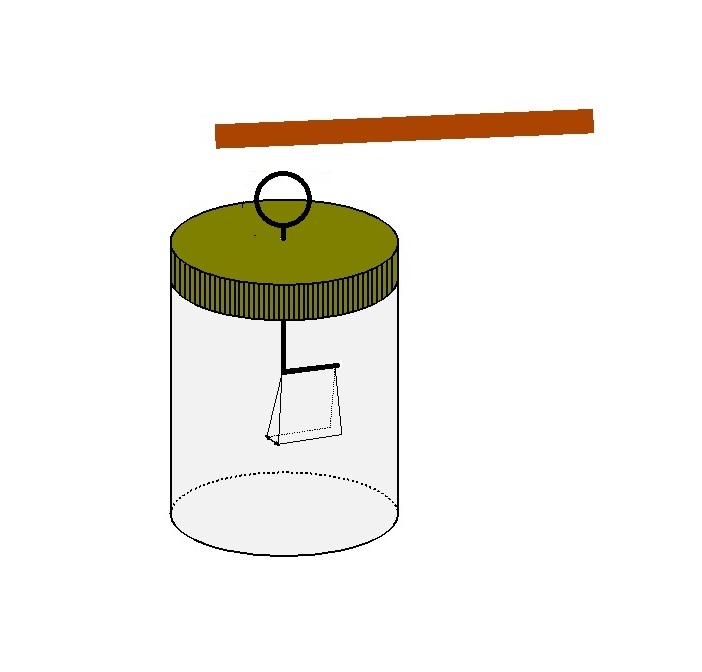Skip to content
042 – Electroscope
Instrument for indicating electrical charges
Charge indicator
Indicator for electric field strength
Introduction to:
- Electrostatic charge
- Electrostatic repulsion of charges of the same name
- Induction
- Transmission of electrical charges
Material:
- Canning jar (clean, transparent)
- Plastic lid
- Wire (approx. 15 cm long) / paper clip
- Aluminum foil (a few square centimeters)
- PVC Tube/Plastic Ruler/Balloon
- Sheep’s wool / wool / a piece of fabric
- Glue / Hot Glue
- Awl / Scissors
- Pliers
- Scissors
Setup:
- Poke a hole in the middle of the lid with the awl
- Push the wire through the hole
- Bend the wire with the help of the pliers: a ring at the top and a hook at the bottom
- Attach it to the lid with glue
- Cut off two strips of several centimeters long and about one centimeter wide from the aluminum foil
- Punch holes in the ends of the aluminum strips
- Hang the foil strips on the hooks. Make sure they touch each other slightly
- Close the jar with the lid
Possible experiments with frictional electricity:
Experiment 1:
- Rub the PVC pipe (rubbing rod) vigorously with the sheep’s wool
- Brush along the wire ring at the top of the electroscope with the rubbing rod
Observation:
- The two aluminum strips spread from each other laterally (deflection)
- If the rubbing rod is removed, the rash remains
- Only when you touch the wire ring with your fingers does the rash go down
Explication:
- The PVC rod is positively charged by rubbing with the sheep’s wool, the sheep’s wool negatively
- The electrical charge on the friction rod partially jumps to the wire ring and is distributed on the conductive parts of the electroscope.
- The two aluminum strips are loaded with the same name and repel each other
- If you touch the finger with the wire ring, the charge flows off again and the deflection subsides
Experiment 2:
- Rub the PVC pipe (rubbing rod) vigorously with the sheep’s wool
- Approximate the rubbing rod to the wire ring at the top of the electroscope
Observation:
- The two aluminum strips spread from each other laterally (deflection)
- If you remove the rubbing rod, the deflection goes down
Explication:
- The electric charge on the friction rod influences a charge of the same name at the ends of the two aluminum strips, so that they repel each other
Note:
- In practice, a small deflection often remains because charges jump through the air to the wire ring
Tips:
- Experiments with frictional electricity often fail in humid air or wet hands, as the water acts as a lubricant and hinders friction
- The balloon can also be electrically charged by rubbing it on the hair
- You can also charge your shoe soles by rubbing them on a plastic carpet
